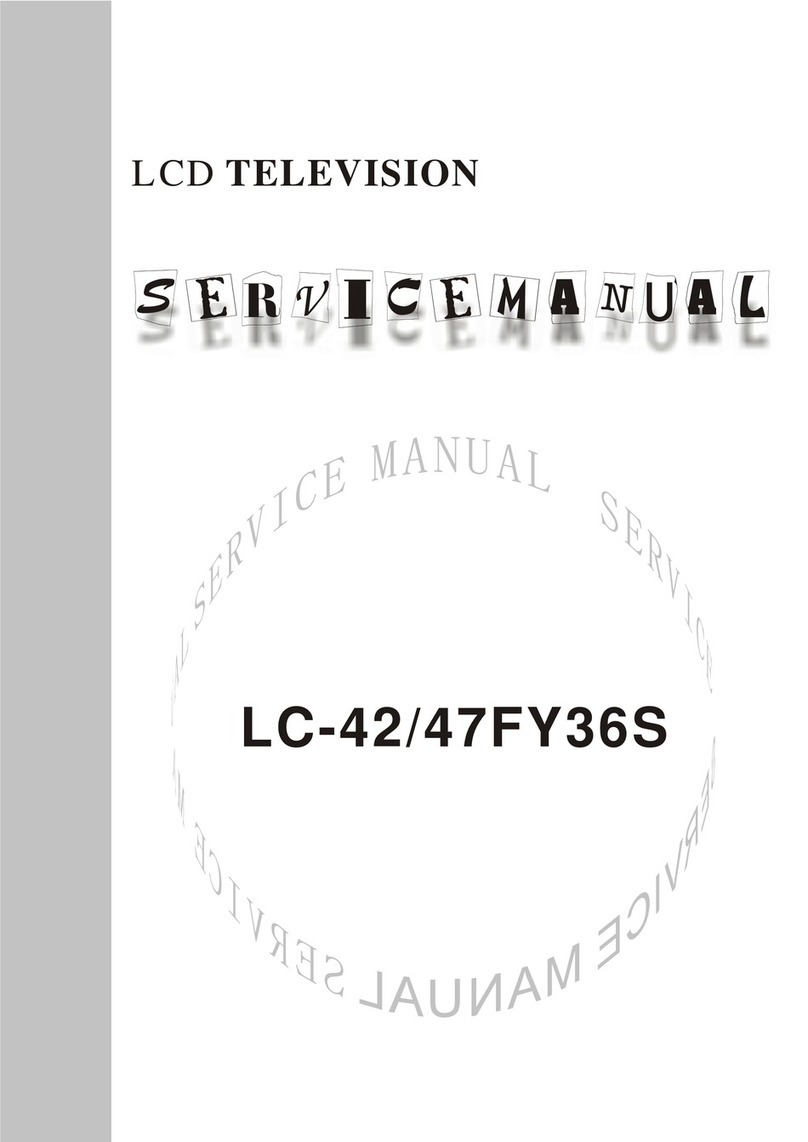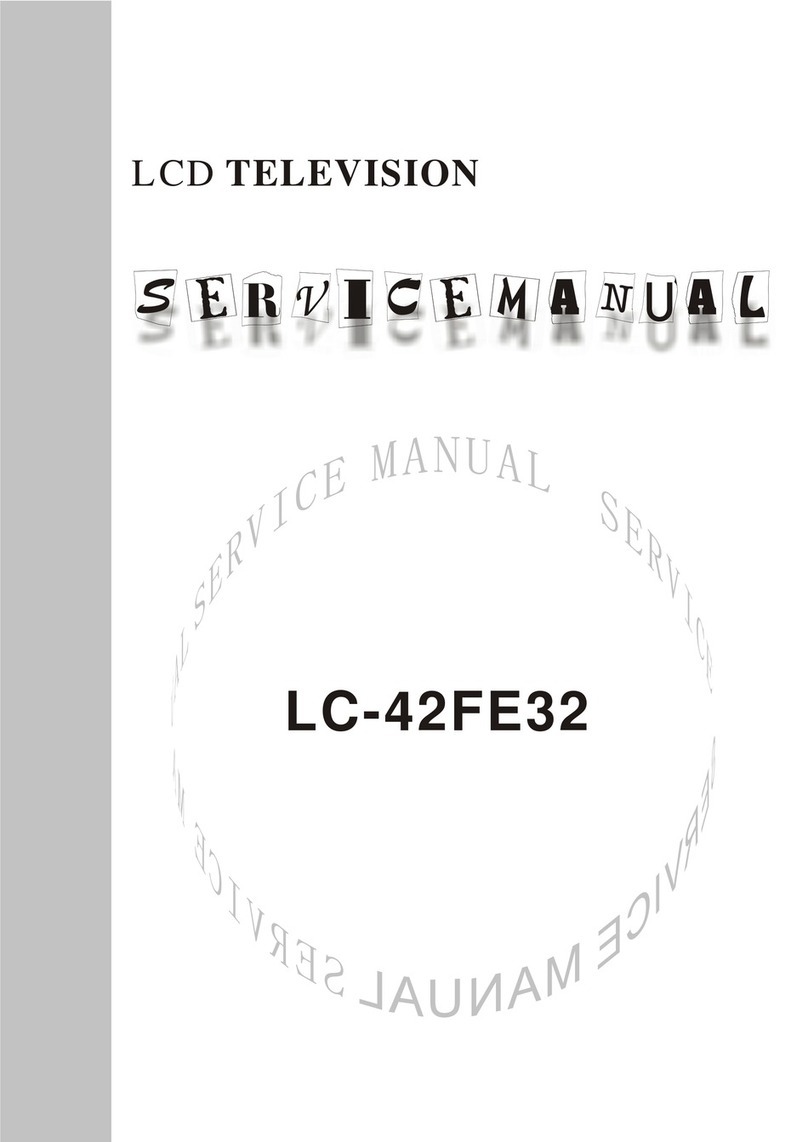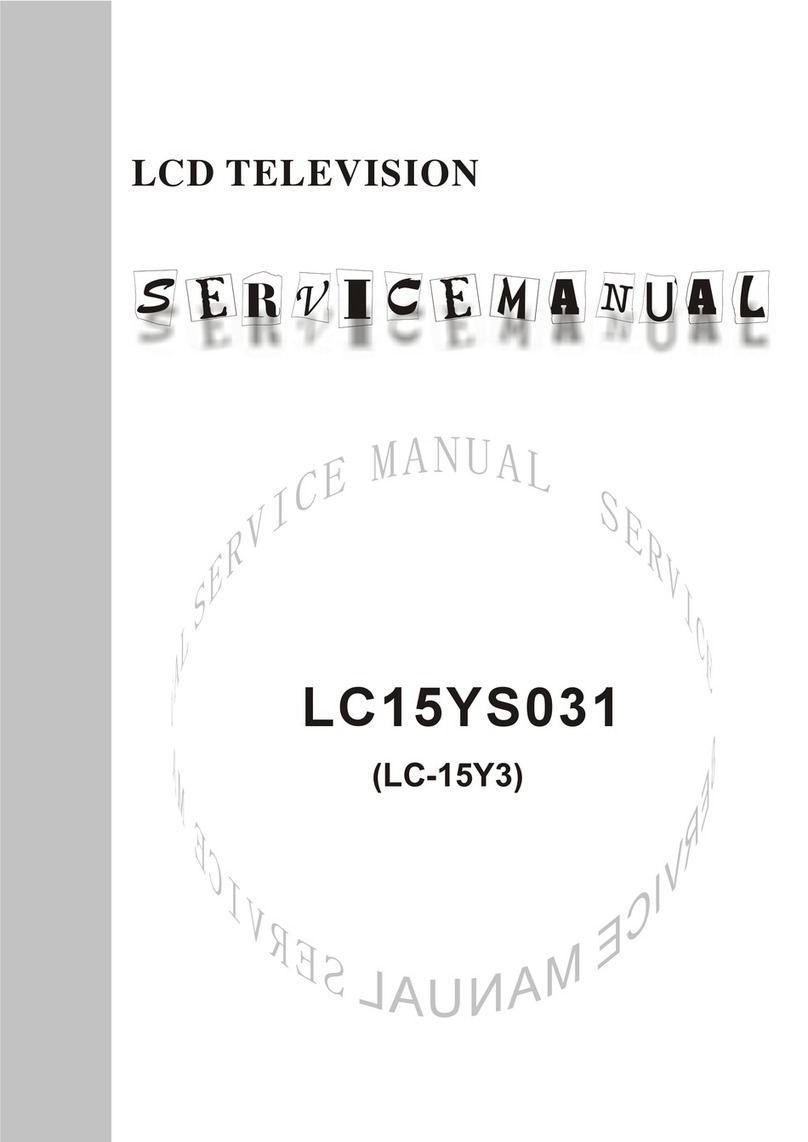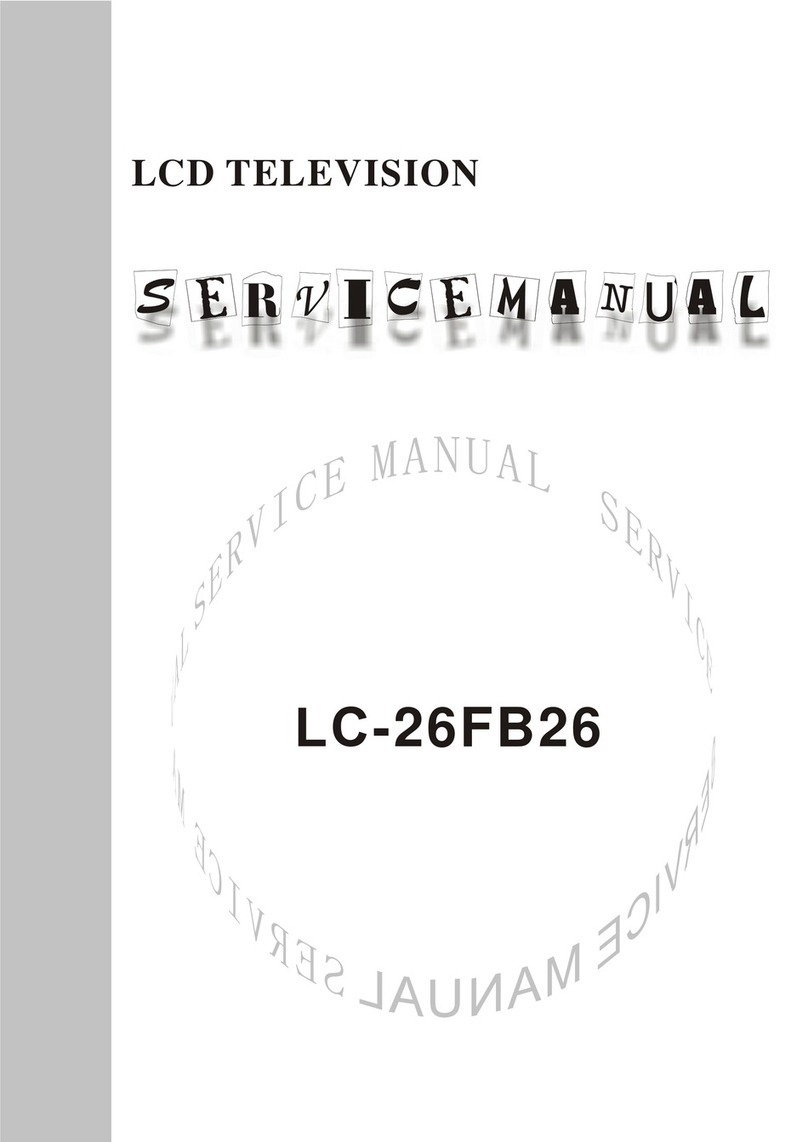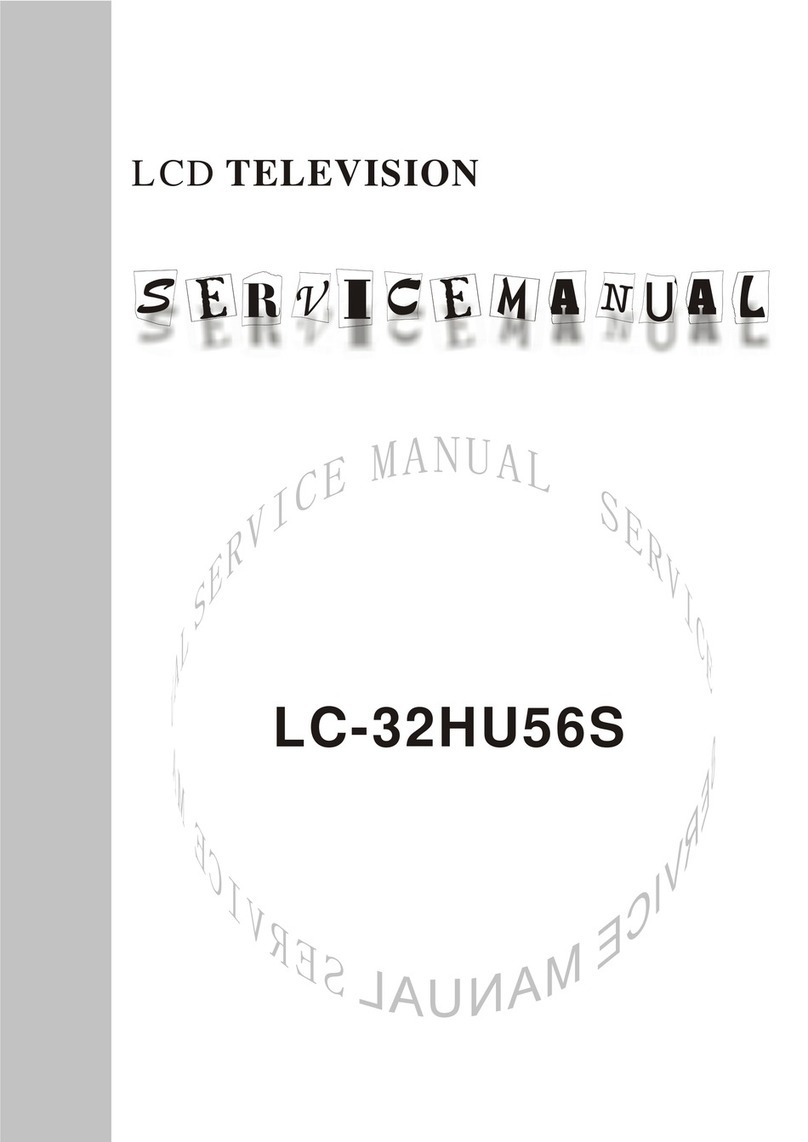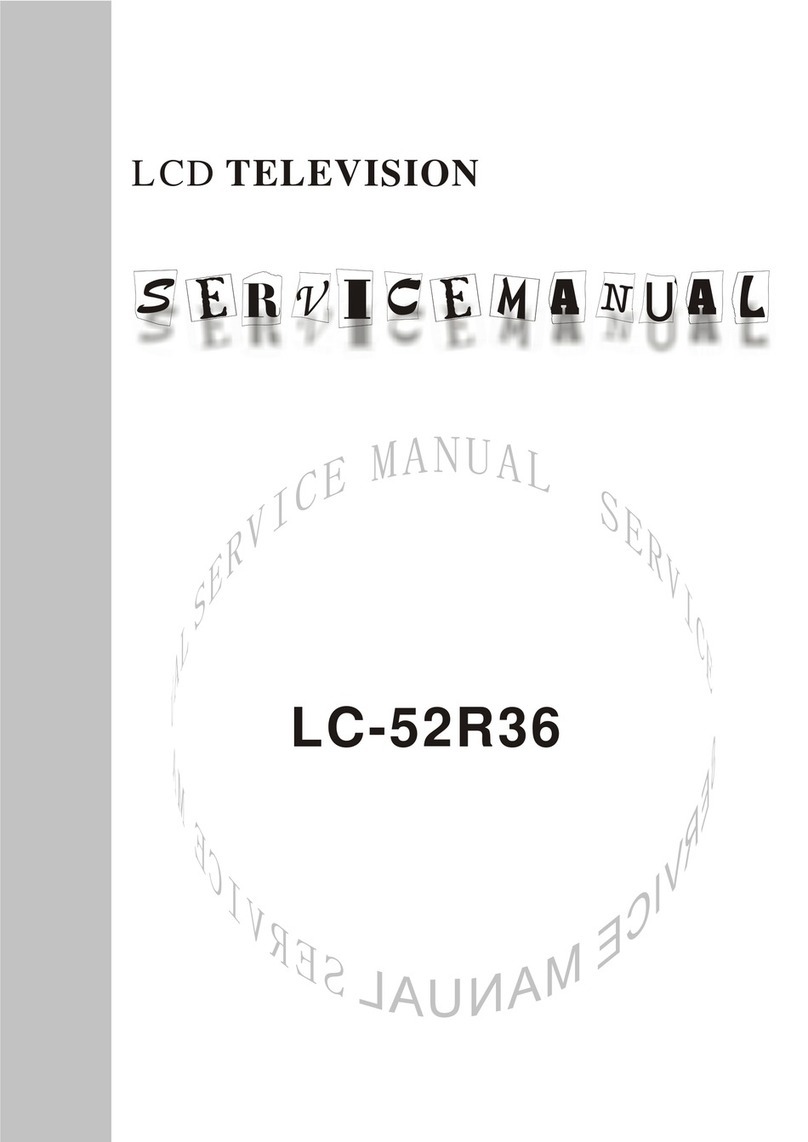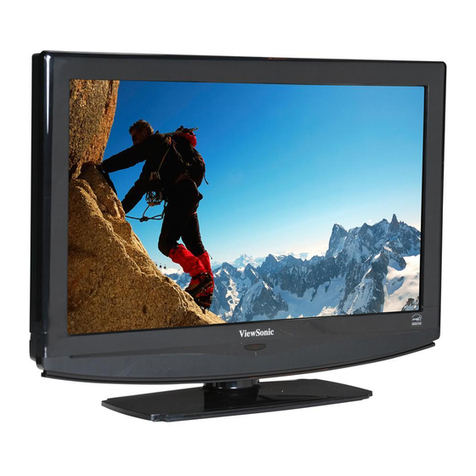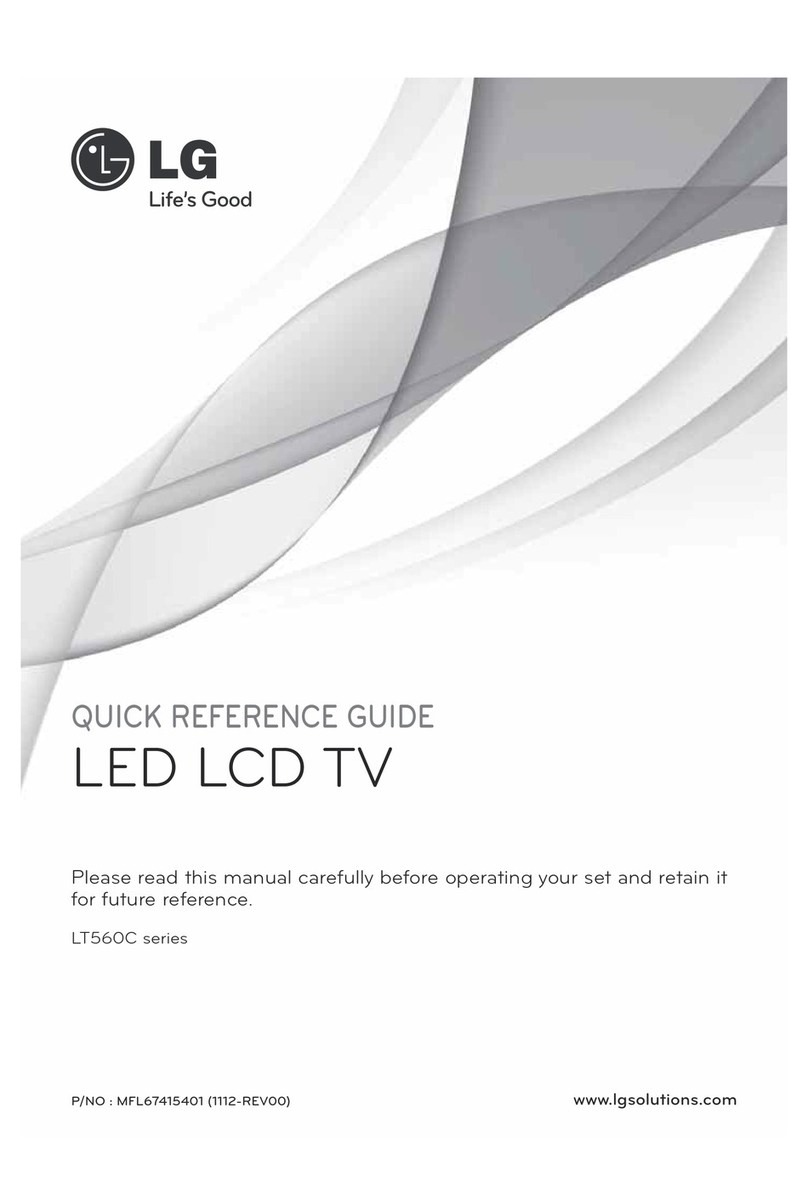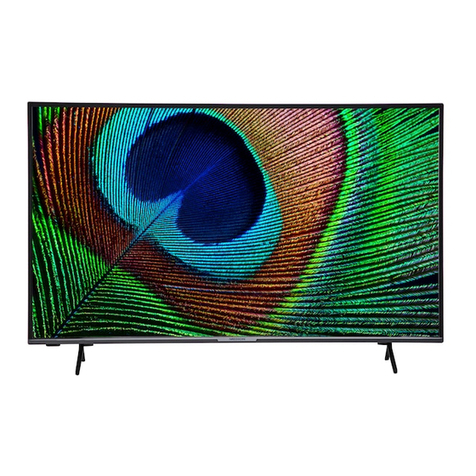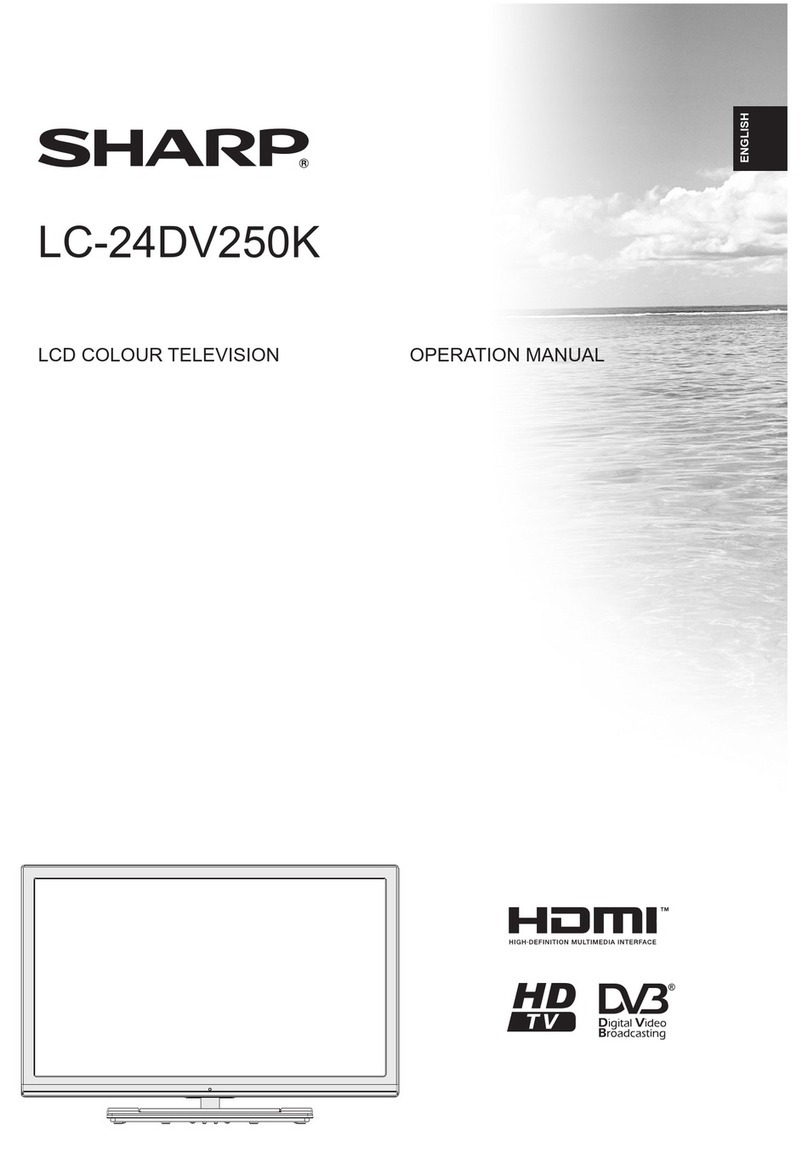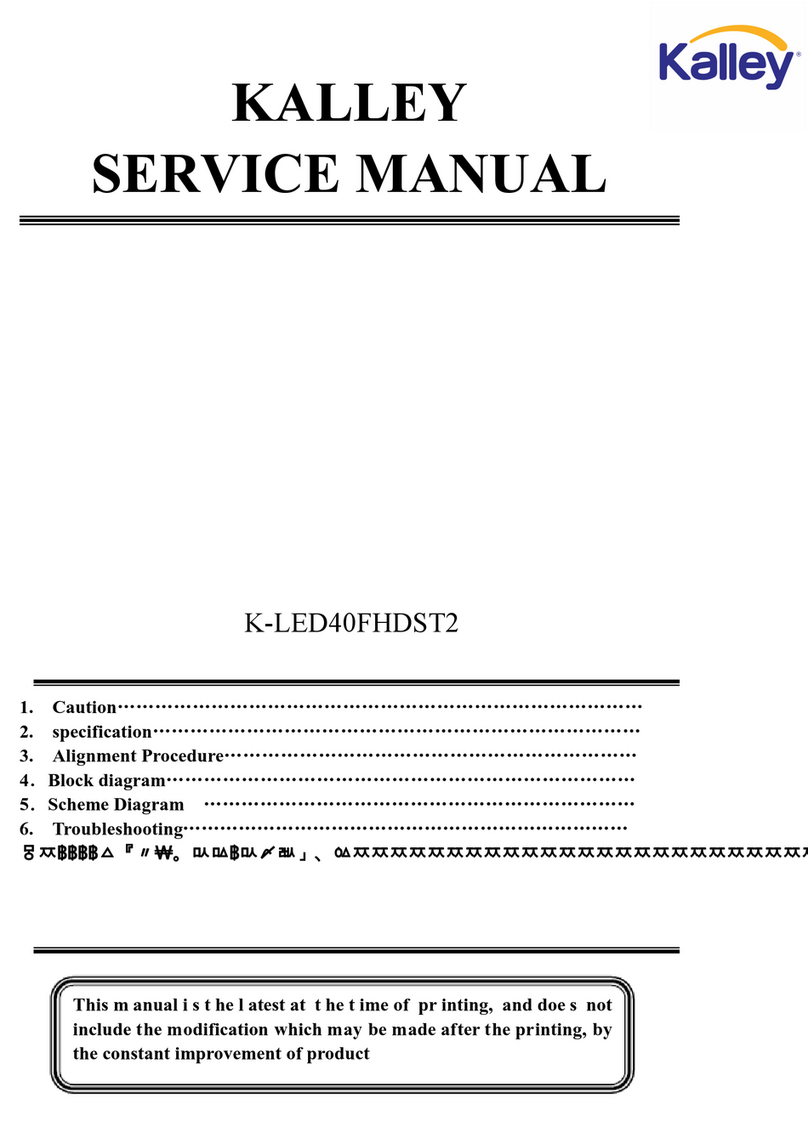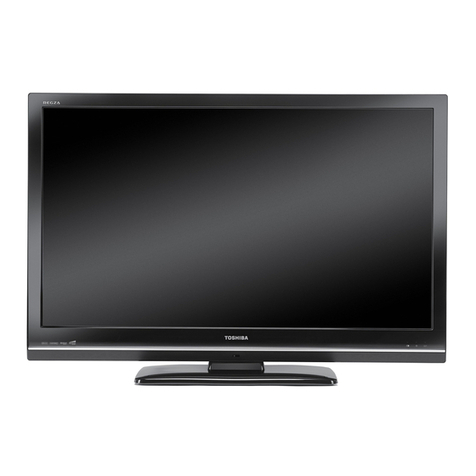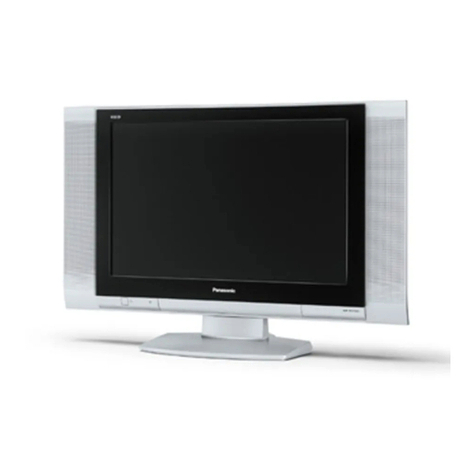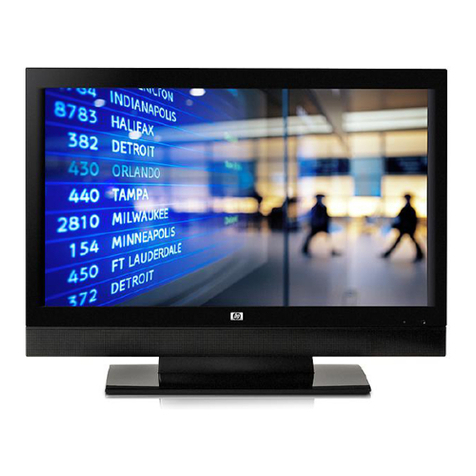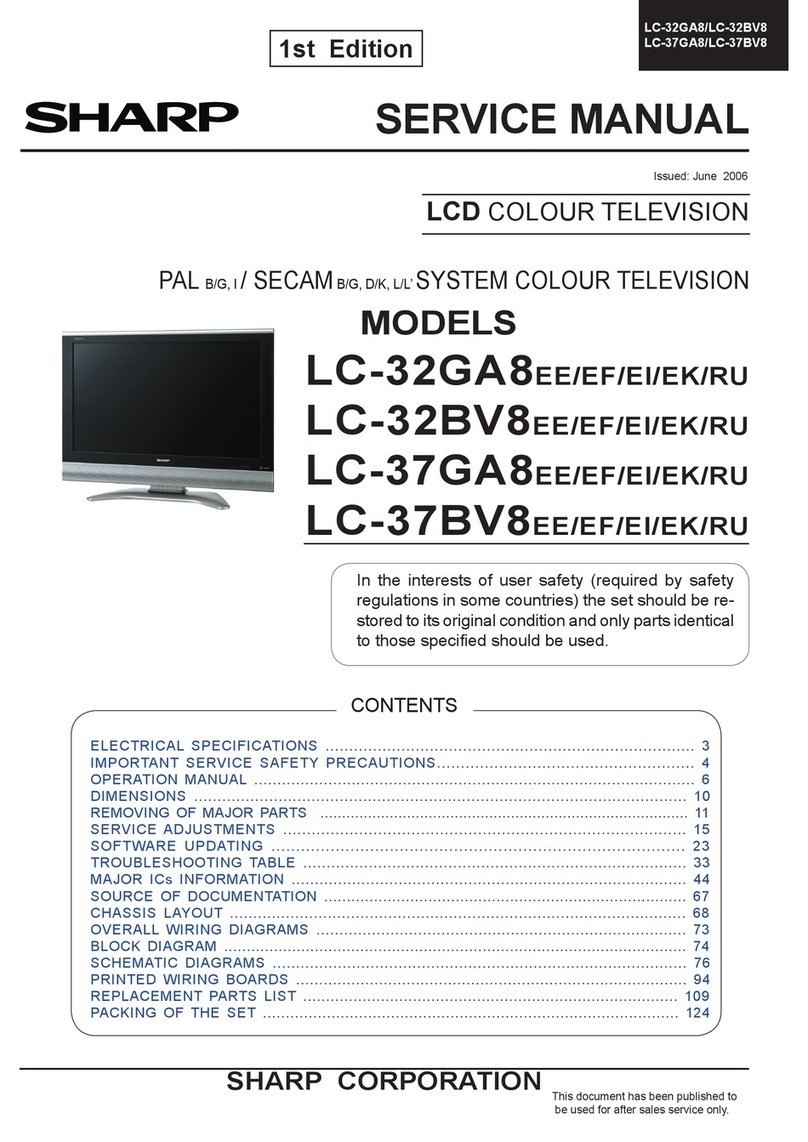
4
3.1 EEPROM initialization
Enter the first page of factory menu, select “clear eeprom” and then press “enter”, shut down the
unit after “ok” appears.
3.2 VGA/DVI channel adjustment
3.2.1 Preset VGA channel mode
Input VGA signal (PATTERN 5: Final Test) of K-7253, select TIME301(640*350/70Hz), press
“AUTO” to do the auto adjustment until the screen is filled with picture. Use the same method to do
auto adjustment for the following items:
TIME302 (720*400/70Hz) TIME303 (640*480/60Hz) TIME311 (800*600/60Hz)
TIME313 (1024*768/60Hz) TIME315 (640*480/75Hz) TIME316 (800*600/75Hz)
TIME317 (1024*768/75Hz) TIME319 (1280*1024/75Hz) TIME339 (1280*1024/60Hz)
3.2.2 ADC adjustment of VGA channel
Adjust ADC-gain to 15.
3.2.3 White balance adjustment VGA/DVI channel
Input K-7253 8 level gray-scale signal of TIME311 and PATTERN474, enter white balance
adjustment menu; adjust the third and seventh levels using white balance.
Select 6500k of “mode”, adjustment offset_R, offset_G and offset_B, let the color coordinate of the
third level be 308 and 316 and its brightness be 16nit more or less. Adjust gain_R, gain_G and
gain_B, let the color coordinate of seventh level be 308 and 316. Adjustment offset_R, offset_G,
offset_B, gain_R, gain_G and gain_B repeatedly until the value of the two levels gray-scale be 308
and 316.
Select 9300k of “mode”, adjustment offset_R,offset_G and offset_B,let the color coordinate of the
third level be 285 and 290 and its brightness be 16nit more or less. Adjust gain_R,gain_G and
gain_B, let the color coordinate of seventh level be 285 and 290.
Select 12000k of “mode”, adjustment offset_R, offset_G and offset_B, let the color coordinate of the
third level be 270 and 283 and its brightness be 16nit more or less. Adjustment offset_R, offset_G,
offset_B, gain_R, gain_G and gain_B repeatedly until the value of the two levels gray-scale be 270
and 283.
Note: gain_R, gain_G, gain_B is value not above 128 and let its value 128 at least.
3.3 Adjustment TV channel
3.3.1 Adjustment VCO, OPTION, sub-brightness and sub-contrast
Input AV color bar signal (PM5518 COLOR BAR 100%) to VIDEO 1 terminal, enter the first page of
factory menu, press “enter” selecting “auto color”, display “OK” after 2 seconds; then you can finish
the VCO adjustment; set the value of “option” to 10, “Hor-width” to 32 and “s-bright” to 140 as well
as S-contrast to 140. set the MaxVolume according to its product standard.
3.3.2 white balance adjustment of TV channel
Input AV signal (PM5518, NTSC system, 8 level gray-scale signal), enter adjustment menu of white
balance, adjust the third level and seventh level using white balance. Adjust offset_R, offset_G and
offset_B to let color coordinate of the third level be 270 and 275 and its brightness be about 21nit.
fixate gain_B to 128, adjust gain_R, gain_G to color coordinate of the seventh level be 280 and 280.
adjust offset_R, offset_G,offset_B, gain_R and gain_G, repeatedly using the same method until
